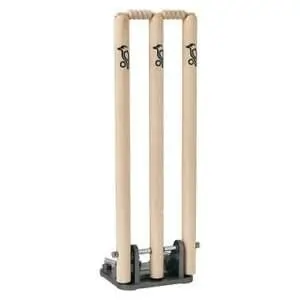Pink Cricket Ball
The pink cricket ball is a new thing, mostly used for matches played during the day and into the night. Here’s why:
- See it better at night: A red ball looks kind of brown under bright lights, making it tough to see for players and fans. Pink shows up much better the whole game.
- Looks cool: Pink adds a fun splash of color to cricket, making it more exciting to watch.
- Plays the same: Don’t worry, the pink ball acts just like a red ball. Same stuff, same weight, same bounce.
So next time you catch a day-night Test match, you’ll know why the ball is pink!
A Unique Twist to the Classic Game
Cricket, often referred to as a gentleman’s game, has seen its fair share of innovations over the years. One such innovation that has taken the cricketing world by storm is the introduction of the pink cricket ball. This vibrant variation of the traditional red cricket ball has brought a fresh perspective to the sport, influencing everything from day-night matches to player strategies and viewer experiences.
The Evolution of the Pink Cricket Ball
From White to Pink: A New Era in Cricket
The idea of using a different colored ball in cricket was first introduced with the white ball for limited-overs formats. However, it wasn’t until 2009 that the concept of the pink ball was experimented with. The pink ball was primarily designed for day-night Test matches to ensure better visibility under lights.
The Science Behind the Pink Hue
The pink color of the ball is carefully chosen to maintain a balance between visibility during the day and under floodlights. The pink shade helps players and spectators alike to track the ball’s trajectory more easily during the evening hours, making the game engaging even after the sun sets.
Enhancing the Playing Experience
Twilight Challenges and Strategies
The transition period between day and night, known as twilight, presents unique challenges for both batsmen and bowlers. Batsmen need to quickly adapt to the changing light conditions, while bowlers exploit the twilight phase to gain assistance from the pink ball’s added movement. This phase has added a new layer of strategy to the game, keeping players and fans at the edge of their seats. Also, read about Which Wood Is Used to Make a Cricket Bat
Impact on Spin Bowling
Spin bowlers, who typically dominate during the daytime with traditional red balls, face an interesting shift in dynamics with the pink ball. The additional lacquer on the pink ball compared to the red one affects the grip and spin for spinners, making it a game of quick adaptation and variation.

Viewer Experience and Reception
A Visual Spectacle
The pink ball’s uniqueness doesn’t only lie in its performance on the field but also in the aesthetic appeal it brings to the game. The vibrant pink hue against the lush green outfield and white cricketing attire create a visually stunning contrast that captures the audience’s attention. Also, discover about How is Cricket Different from Other Team Games
Mixed Reactions and Enthusiasm
The introduction of the pink ball has garnered mixed reactions from players and fans alike. While some relish the innovation and the added excitement it brings, others have expressed concerns over its durability, swing, and potential advantages for certain teams. Nonetheless, the buzz and discussions around the pink ball have contributed to cricket’s ever-evolving narrative.
The Future of the Pink Ball
Expanding Its Horizons
The pink ball’s success in day-night Test matches has paved the way for further experimentation. Cricketing boards around the world are exploring the possibility of using the pink ball in other formats, such as One Day Internationals (ODIs) and even T20 matches. This expansion could add a new dimension to limited-overs cricket as well.
Continuous Innovation in Cricket
The pink cricket ball serves as a testament to the sport’s willingness to embrace innovation while respecting its traditions. As cricket continues to evolve, new ideas and concepts will shape the way the game is played, watched, and cherished by millions of fans worldwide.

Conclusion
The pink cricket ball has undoubtedly injected a sense of excitement and novelty into the cricketing landscape. From its vibrant hue to its impact on player strategies and viewer experiences, the pink ball has redefined the way we perceive the sport. As cricket continues to captivate hearts across the globe, innovations like the pink ball remind us that even the most classic games can find new shades of brilliance.
FAQs
Why is the pink cricket ball used in day-night matches?
The pink ball’s color enhances visibility during twilight hours, making it easier for players and spectators to follow the game under floodlights.
How does the pink ball affect bowlers and batsmen differently?
The pink ball’s characteristics can lead to variations in swing and spin, impacting both bowlers and batsmen during different phases of the game.
What challenges do players face during the twilight phase of day-night matches?
The transition from daylight to floodlights, known as twilight, poses challenges in adapting to changing light conditions and utilizing the pink ball effectively.
Is the pink ball used in all formats of cricket?
Currently, the pink ball is primarily used in day-night Test matches, but there are discussions about its potential introduction in other formats like ODIs and T20s.
What does the pink cricket ball symbolize in cricket?
The pink ball represents cricket’s commitment to innovation while maintaining respect for tradition, ushering in new dimensions to the game and captivating global audiences.











[…] the format. His highest score ion Tests is 143.Azam has been a consistent performer for Pakistan in Test cricket and has established himself as one of the best batsmen in the world in the format. He has been a […]